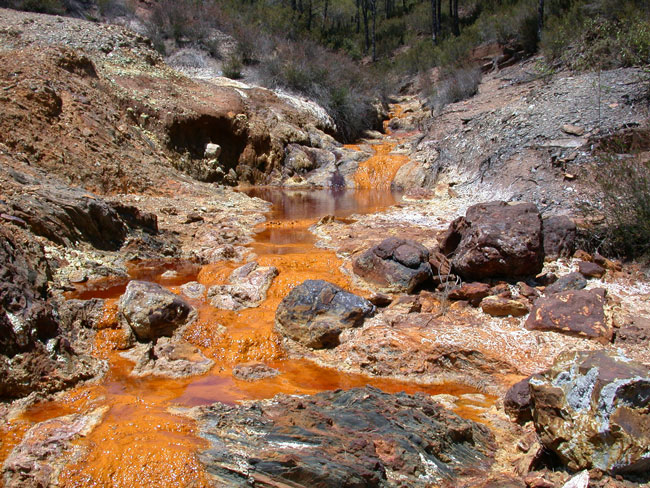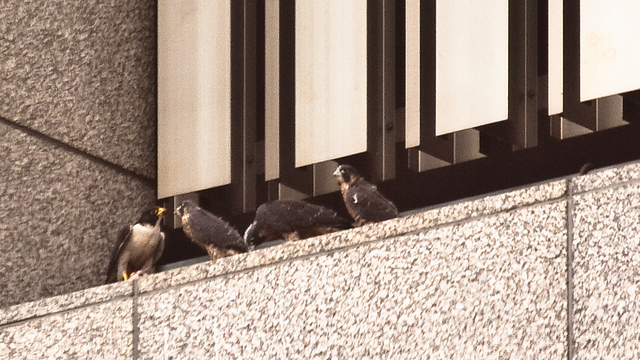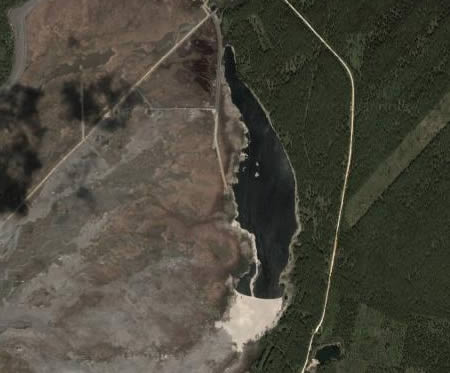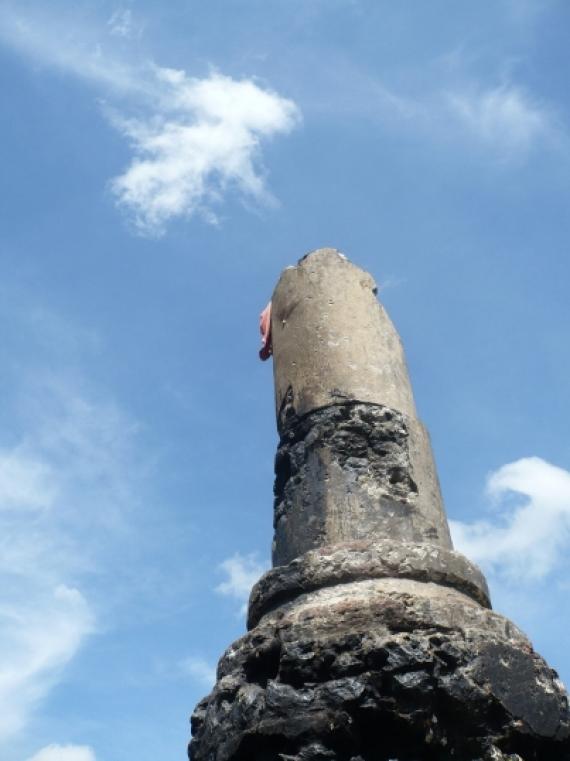Best of the Week – 2010.08.17
Our picks for the best new entries added to Atlas Obscura throughout the last week. Add your favorite locales from around the globe to be included in next week’s “Best of” post!
RIO TINTO (RED RIVER) - Spain

(source)
Spain’s “red river” runs through the southwestern region of the country. After being mined for five thousand years by everyone from the Phoenicians to the Romans to the Moors, the river appears blood red because of dissolving iron in the water. The high acidity level of the Rio Tinto makes it dangerous for swimmers, but draws scientists in. Extremophile aerobic bacteria living off of sulfide materials in the river’s subsurface rocks have led scientists to believe that life could exist in other inhospitable environments found in the solar system. Jupiter’s moon Europa, for example, is thought to contain an acidic ocean underneath its surface.
Complete Atlas Obscura entry on Spain’s Rio Tinto
SAN FRANCISCO’S PEREGRINE FALCONS - San Francisco, California, United States

(source)
Reaching speeds up to 200 mph, the Peregrine Falcon is one of the fastest animals in the world. Celebrated by falconers for hundreds of years, they were once abundant all over the world, but were pushed to the brink of extinction within the last fifty years. Slowly, their populations are starting to rebound - and in some unlikely places. Two breeding pairs in California have used a nesting box installed at the PG&E building in downtown San Francisco to grow the state’s population to an estimated 800 today.
Complete Atlas Obscura entry on the Peregrine Falcons of San Francisco
LAKE KARACHAY - Ozersk, Russia

(source)
This small lake in Russia’s southern Ural mountains was used as a dumping site for the radioactive waste created by the nearby Chelyabinsk-65, a nuclear waste storage and reprocessing plant, for several years. A Washington, D.C.-based environmental group ranked the lake the most polluted spot on the entire planet, with the level of radioactivity measured comparable to that distributed by the Chernobyl disaster. So polluted, the water in the lake could kill a human within an hour. Throughout the 70s and 80s, the government filled the lake with thousands of concrete blocks to keep sediment from shifting and being distributed by strong winds.
Compete Atlas Obscura entry on Lake Karachay in Russia
JUBILEE VOODOO MONUMENT - Haiti

(source)
Though there are many local stories concerning the construction of the Jubilee Voodoo monument, the general consensus is that a cross was built around 200 years ago by the Catholic church, which claimed the hill for their Lord. Years later, lightning struck the cross, which was sent tumbling down the cliff. Locals believe that this act was their personal gods reclaiming the hill and they have worshipped the site ever since. Today, daily pilgrimages are made to the monument for worship and to make sacrifices.
Complete Atlas Obscura entry on Haiti’s Jubilee Voodoo Monument
GIBRALTAR AIRPORT - Gibraltar

(source)
If you’re driving through the British overseas territory of Gibraltar and see a passenger jet crossing the highway, don’t worry: It was designed this way. When planes are scheduled to land or take off from the single runway at the Gibraltar Airport, the road is closed by way of traffic signals and gates, and any pedestrians already on the runway are expected to get out of the way of the aircraft. Although not an extremely busy airport, GIB handles several flights to and from London and Manchester each day. On average, the road is closed for 10 minutes for each flight in or out.
Complete Atlas Obscura entry on the Gibraltar Airport



Follow us on Twitter to get the latest on the world's hidden wonders.
Like us on Facebook to get the latest on the world's hidden wonders.
Follow us on Twitter Like us on Facebook